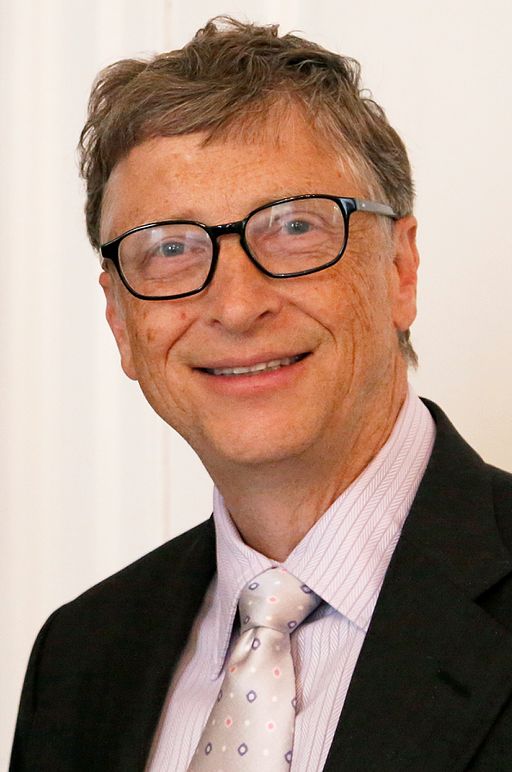
William Henry Gates III, known to the world as Bill Gates was born on October 28, 1955, in Seattle, Washington. His father, W. H. Gates II, was a prominent lawyer and his mother sat on the board of directors for the First Interstate BancSystem. During his early elementary school years, young William was small for his age and became a target of bullies. When he reached age 13, he was enrolled in grade 8 at the private Lakeside prep school where the Mother’s Club had purchased for the school a terminal to a GE computer. Bill became consumed with the computer and was excused from math class to pursue his passion for writing computer code in the recently developed BASIC language. Eventually Gates and three of his friends, hacked into the PDP-10 computer in the Computer Center Corporation to gain free access. After their crime was discovered, Gates and his friends promised to repair bugs in the company’s computer programs in exchange for more free access to their PDP-10. By his junior year, Bill Gates and his friend, Kent Evans had developed sufficient computer programming skill to receive payment from Lakeside School for programming the scheduling of classes. However, a few months into the project, Kent Evans was killed while mountain climbing. After recovering from the trauma of this tragedy, Gates paired with Paul Allen to complete the task.
In 1972, at age 17, Bill Gates and Paul Allen created Traf-O-Data to make traffic counters using the Intel 8008 processor. The next year, Bill graduated from Lakeside and with a score of 1590 out of 1600 on his SAT’s gained entry into Harvard. Though majoring in pre-law, he also took courses in mathematics and computer science. Then, in January 1975, on reading about the Altair 8800, a computer developed by the MITS company, he and Paul presented to MITS a demonstration of how they could program the Altair 8800 to run the BASIC language. On April 4, 1975, Gates and Allen incorporated Microsoft and Gates subsequently dropped out of Harvard, never to return.
In Hard Drive: Bill Gates and the Making of the Microsoft Empire, Gates’ biographers James Wallace and Jim Erickson describe the rumination that engaged Bill Gates as he contemplated his future:
At Lakeside, [High School] Gates had been the best student in the school at math. Even at Harvard, he was one of the top math students. But he was not the best. … “I met several people in the math department who were quite a bit better than I was at math. It changed my view about going into math. You can persevere in the field of math and make incredible breakthroughs, but it probably discouraged me. It made the odds much longer that I could do some world-class thing. I had to really think about it. Hey, I’m going to sit in a room, staring at a wall for five years, and even if I come up with something, who knows. So it made me think about whether math was something I wanted to do or not.”
This single decision not only changed dramatically the trajectory of the life of William Henry Gates III, but it changed the development of the world of computers and paved the way for the expansion of personal computers. Microsoft Inc. became IBM’s software developer, Microsoft grew into one of the world’s largest corporations, and Bill Gates became one of the 10 wealthiest people in the world.
The Gates Foundation has made substantial contributions to various causes that span a wide range of charities as well as a broad geographic span. Among these is the recent donation of $1 billion to the enhancement of mathematics education in America. Emphasizing the important role of teachers in the learning of mathematics, Gates once observed:
Research shows that there is only half as much variation in student achievement between schools as there is among classrooms in the same school. If you want your child to get the best education possible, it is actually more important to get him assigned to a great teacher than to a great school.
